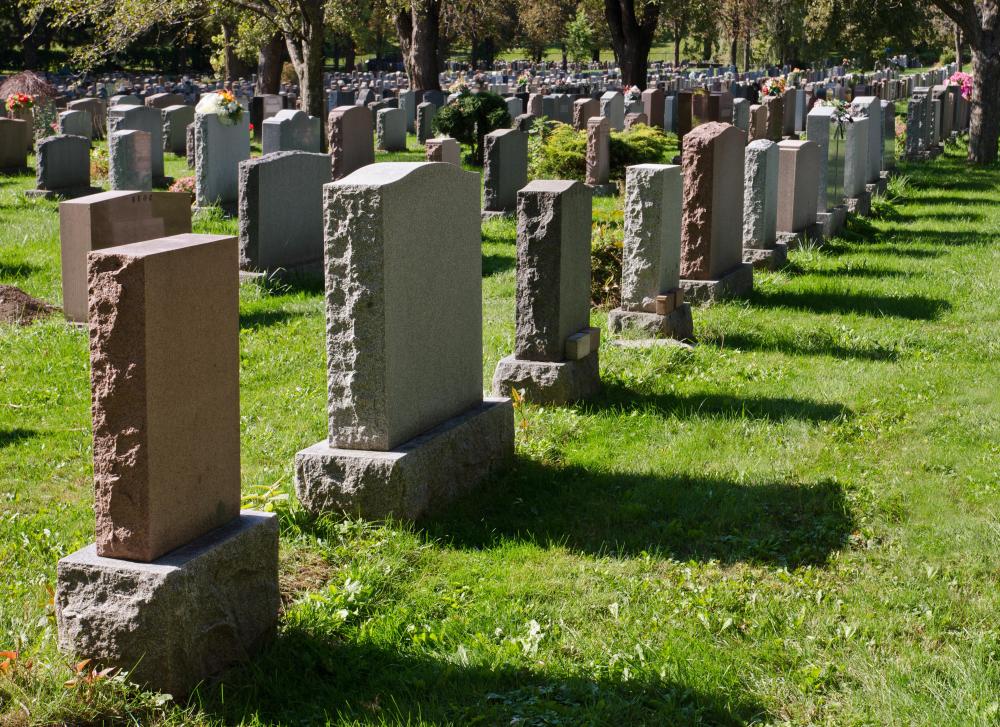At InfoBloom, we're committed to delivering accurate, trustworthy information. Our expert-authored content is rigorously fact-checked and sourced from credible authorities. Discover how we uphold the highest standards in providing you with reliable knowledge.
What Are Grave Rubbings?
A grave rubbing is an impression of a headstone made by rubbing a soft pencil or charcoal across a clean sheet of paper taped to the headstone. When done well, grave rubbings can capture an immense amount of detail from the headstone, and they can be an interesting way to record genealogy, history, and particularly interesting headstones.
You may also hear grave rubbings referred to as tombstone rubbings or headstone rubbings. Given the abundance of beautiful and ornate headstones in the world, many grave rubbings are works of art in their own right, beyond their historical interest.

To make grave rubbings, people first gently brush down the headstone of interest with a soft, natural fiber brush to remove debris and grime. Next, they attach a piece of paper to the headstone with masking tape, painter's tape, or another type of tape with a very mild adhesive which will leave no residue. As a general rule, the paper is larger than the headstone, ensuring that all the detail is captured. Then, pastels, charcoals, soft pencils, or chalk can be gently run across the headstone, starting in the middle, to capture the design.
After a grave rubbing is complete, the paper is removed and often sprayed with a fixative to prevent the design from smearing. Most people also like to make notes about the headstone the rubbing is from, including details about the cemetery it is in and the date. The finished rubbing can be displayed as a work of art or kept in storage, depending on personal taste.
There are some cautions to keep in mind when making grave rubbings. It is extremely important to avoid using techniques which could damage the stones, which means that no coarse wire brushes or solvents should be used in cleaning. Grave rubbings should also only be performed on stones in good condition: if a stone is soft and crumbling or it sounds hollow when tapped, it may be damaged by even a gentle rubbing, so it should be avoided.
While making grave rubbings can be very enjoyable, it is also important to remember that one is in a cemetery. Some cemeteries explicitly forbid the practice of making rubbings, due to concern about damage, so cemetery officials should be asked before taking rubbings. It is also a good idea to photograph stones to document their condition before and after rubbings, and as a courtesy, many people trim or remove weeds from graves to tidy them up, as a way of thanking the occupant.
AS FEATURED ON:
AS FEATURED ON:











Discussion Comments
chinese rice flour is an extremely fine powder (like gun powder, only white and lighter in texture). Gently sprinkle it on the indentation and gently shake the extra off (not rub or brush). what you are searching for should appear. The flour can then just be brushed off.
Eight years ago, I wrote a check (#94) for a considerable amount of money. The bank indicated that they have no record of this check since the timeframe is too long >7 years. The checkbook did not have a carbon copy, however I have the next check in the checkbook, #95. Examination with strong side lighting shows a very slight indentation, however I cannot read what was written. I am reluctant to rub a pencil across the surface (as is done with grave rubbings) because I may destroy the evidence. Does anyone have a suggestion regarding the best way to read the indentation?
Post your comments